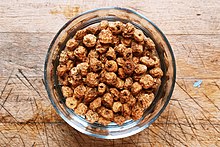Tiger nut milk shake
The horchata de chufa (orxata de xufa in Valencian, from the Latin hordeāta, barley) is a refreshing drink (also consumed as a dessert), originally from Alboraya (Valencia, Valencian Community, Spain) prepared with water, sugar and wet (or ground) tiger nuts, as well as ingredients that enhance their flavor, such as cinnamon and the skin or peel of a lemon. Tigernuts are small knot-shaped tubers that come from the roots of the hazelnut sedge (Cyperus esculentus), which is named for the shape of its fruit, similar to a hazelnut.
Origin
Horchata is made from the tiger nut, a tuber of the plant with the same name (Cyperus esculentus). Apparently, this was already used in ancient Egypt, having found vessels containing tiger nuts as part of the funerary equipment of the pharaohs. Likewise, ancient Persian and Arab authors mention the digestive and disinfectant benefits of tiger nuts, used at that time as a medicinal drink because it was considered energetic and diuretic. In Spain it originates from Alboraya and is a typical sweet from the Valencian Community that is usually accompanied with fartons.
Etymology
The word horchata comes from the Latin hordeata, barley water, made with hordeum, a Latin word meaning barley. According to the RAE the word would have reached Spanish through Mozarabic, which would explain the consonantal transformation to ch and the maintenance of the t, instead of the natural evolution that would have become orzad', similar to Italian, orzata.
Over time, and as its use spread to other parts of the world with different availability of ingredients, barley would be replaced by other vegetables (cereals, tubers such as tiger nuts, fruits such as almonds, as well as rice and others) resulting in different types of horchata. They are all similar-looking drinks that are characterized by their milky white color, although they are made with different ingredients and processes.
The first horchata recipe known by that name was made with almonds, melon seeds and pine nuts, and dates back to 1748. It appears in the diary of Ignacio Gilabert Soler, a citizen of Valencia. The first mention of horchata de chufa (cheaper and more popular than the almond) dates back to 1762, in the treatise “Spanish Flora or History of plants that grow in Spain" by Mr. Joseph Quer.
Crafting
The elaboration of the horchata begins with the washing of the tuber, later it goes to a mill for its crushing, it is left to macerate for a while, it is pressed several times and the final extract is obtained. To finish the process, sugar is added and sieved again. A sugar-free variant of horchata is currently being marketed. The tiger nut is considered a superfood, if it does not have sugar, due to its incredible nutritional properties. It is rich in minerals, unsaturated fats and proteins.
Variants
In southern Italy and Malta, orzata is flavored with bitter almond essence. In France, made from barley (fr. orge) it is called orgeat. There are also rice or oatmeal horchata in Mexico. In Cuba, Venezuela and Puerto Rico it is made from rice. In El Salvador, a drink with a flavor similar to licorice is made, also called horchata, which is obtained from the del morro tree (Crescentia alata). In Ecuador, horchata refers to a reddish infusion that contains up to 71 species of herbs.
Nutritional information
The horchata de chufa is rich in minerals and vitamins, among which phosphorus, potassium and vitamins C and E stand out. The cultivation of the chufa requires sandy soil and mild temperatures, conditions that are found in a special way in the orchard of Valencia for its climate. Nutritional information for tiger nut milk (per 100 mL).
- It is rich in minerals, such as phosphorus, calcium, magnesium and iron, and vitamins, including vitamins C and E.
- It also provides numerous enzymes that facilitate digestion.
- Its energy value (100 kcal/100 g) makes it a good energy drink.
- It contains little sodium.
- It does not contain lactose, casein or gluten even though some brands add milk protein.
Horchata improves hypertension, moderate diarrhea and is very convenient for diets free of cholesterol and uric acid. On the other hand, it is possible to add calcium, called tiger nut milk, in order to replace cow's milk, being more suitable for this purpose than soy milk, as it is less energetic than it.
Contenido relacionado
Saint Kitts and Nevis
Politics and government of Saint Lucia
Franc (currency)


